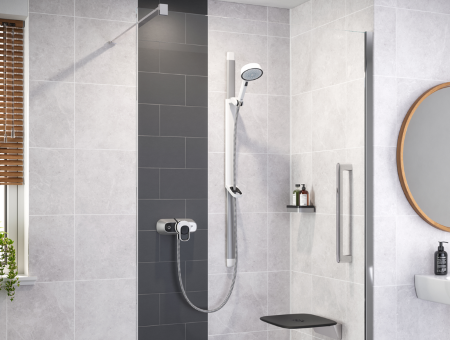Simon Osborne, Specification Channel Manager at Baxi Group, looks at the next generation of micro-CHP (Combined Heat and Power) technology which will enable developers to meet the challenges presented by the Code for Sustainable Homes with confidence.
Changes to Part L1 of the Building Regulations, amended in October 2010, and the Code for Sustainable Homes, require property developers to meet new energy targets for private housing developments.
Among the key changes to Part L1 is the requirement for Design Submissions to be in the Regulations in addition to As Built Submissions, and software outputs that enable Building Control to check adherence to the design. The Design Limits for Building Services equipment have been expanded to cover the micro-generation of heat and electricity by heat pumps, solar thermal panels, combined heat and power (micro-CHP), wind turbines and solar photovoltaic (PV) panels.
The Code for Sustainable Homes continues to cover performance in its nine key areas. These performance targets remain in excess of the minimum needed to satisfy Building Regulations. Changes to Part L1 are reflected in the Code to ensure that the energy efficiency requirements contained within it do not fall below the Part L1 2010 minimum standards.
From 2010, private developers are required to meet Code Level 3, where Part L1 2010 is set, then Level 4 by 2013.
Since its introduction, the Code for Sustainable Homes has certainly accelerated the move towards micro-CHP and in view of the changes to Part L1 2010, this technology will prove an increasingly important option.
A micro-CHP appliance has the capability to provide heating and hot water for the home at the same time as its internal engine generates around two thirds of a property’s electricity to power appliances and systems within the dwelling. Any surplus electricity can then be effectively returned to the grid and credited by the utility using the Government’s Feed-In Tariffs (FIT) scheme.
Energy generated this close to the point of use is far more efficient (over 90%) than that generated at a centralised power plant, which is only around 35% efficient by the time it reaches the home.
Unlike solar or wind powered technologies, micro-CHP can operate at specific times of the day when the carbon intensity of grid-provided electricity is at its worst, usually in the morning and early evening. As this is technically when the trading price of electricity is highest, the true carbon savings of micro-CHP are greater than the average grid intensity.
This high efficiency, low carbon technology, recognised in Part L1 2010 and the Code for Sustainable Homes will help developers effectively meet Code Level 3 and 4. In doing so, it will also save energy and keep fuel costs low for the homebuyer and dramatically help the country cut its carbon emissions.
The Baxi Ecogen is the first proven, wall-hung micro-CHP unit which private developers can specify. The beauty of this product is that it looks and behaves just like a conventional gas boiler, and takes up just the same amount of space, making specification and installation straightforward.
A major step forward in home energy efficiency, micro-CHP offers a sustainable AND attainable way of delivering greener homes in line with Part L1 2010, the Code for Sustainable Homes and the Feed-In Tariff framework.
For more information on the range of Baxi Group System Solutions, including Baxi Ecogen and micro-CHP, visit
www.baxigroupspecification.co.uk.





